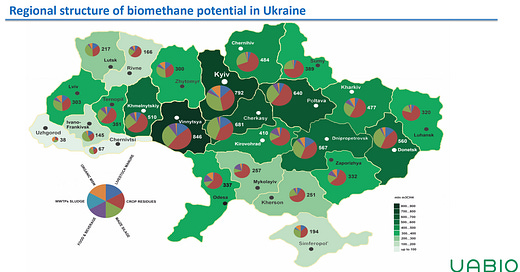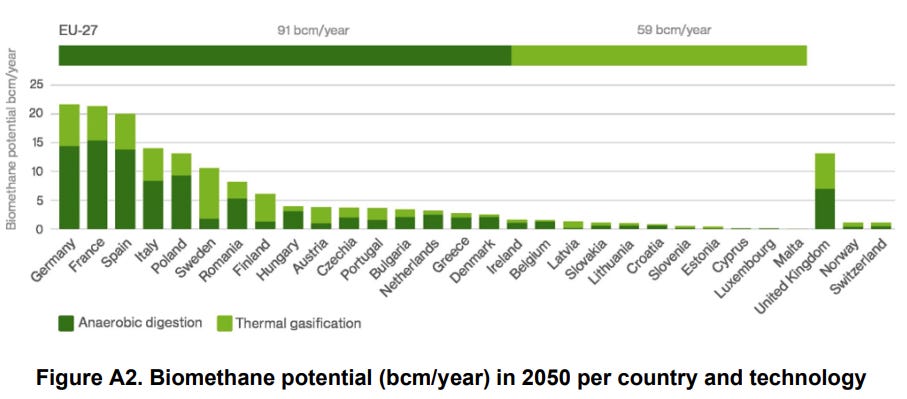Ukraine's biomethane opportunity
The war torn nation could become a major exporter of 'renewable natural gas' to Europe
Welcome to Carbon Risk — helping investors navigate 'The Currency of Decarbonisation'! 🏭
If you haven’t already subscribed please click on the link below, or try a 7-day free trial giving you full access. By subscribing you’ll join more than 4,000 people who already read Carbon Risk. Check out what other subscribers are saying.
You can also follow on LinkedIn and Bluesky. The Carbon Risk referral program means you get rewarded for sharing the articles. Once you’ve read this article be sure to check out the table of contents [Start here].
Thanks for reading Carbon Risk and sharing my work! 🔥
Estimated reading time ~ 7 mins
“We have a very good relationship, and I also have a very good relationship, as you know, with President Putin…and I think if we win, I think we’re going to get it resolved very quickly … I really think we’re going to get it … but, you know, it takes two to tango.”
- Donald Trump
Trump’s landslide victory has focused the minds of investors on a potential swift end to the Russia-Ukraine conflict. If you believe Trump then the war will be over very soon, perhaps even before inauguration day (20th January), despite him having no presidential powers bestowed upon him prior to being sworn in.
One sector that has the potential to benefit from an end to hostilities is Ukraine’s biomethane industry. It currently has 77 operational biogas plants with a combined capacity of 0.26 bcm. A further 7 facilities (with a combined capacity of 0.11 bcm) are due to start production by the end of the year.
Biomethane supply from Ukraine has the potential to grow significantly, especially given it’s cost competitiveness versus other European producers. With 33 million hectares of agricultural land it is able to source feedstock at lower cost than many other nations in Europe. The Bioenergy Association of Ukraine (UABIO) projects that Ukrainian production could reach 5 bcm by 2040 (requiring 900 plants), and rise to 20 bcm by 2050 (based on a total of 4,000 plants).1
Even if Ukraine has to give up Russian controlled areas as part of a future settlement it would not make a material difference to Ukraine’s biomethane potential. The map below shows UABIO’s estimates of potential biomethane production across Ukraine’s territory. As of mid-November 2024, Russia controls most of the four eastern Ukrainian oblasts, plus Chechnya. The majority of the country’s biomethane potential lies in the centre, close to Kyiv.
Guidehouse estimates that European biomethane supply (excl. Ukraine) could rise to over 110 bcm by 2040, and hit 175 bcm by 2050. If Ukrainian biomethane production does reach 20 bcm by 2050 it is likely to rank among Germany, France and Spain as the largest European producers. UABIO estimates that the industry will require €2 billion in investment to reach its 2030 production target, and close to €40 billion if Ukraine is to reach its full potential and hit 20 bcm by 2050.2
Biomethane exports could help fund post-war construction
The government recently passed a law allowing biomethane to be exported to the EU via the Ukrainian gas transmission system. The reason why this is important is that biomethane could make a significant dent in Europe’s reliance on natural gas. If European biomethane production hits 110 bcm by 2040 and 175 bcm by 2050, it could displace 37% and 60% of the EU’s current annual gas consumption, respectively. Meanwhile, because its also carbon neutral, biomethane can help to decarbonise both Europe’s domestic heating systems, and much of it’s industrial base.3





